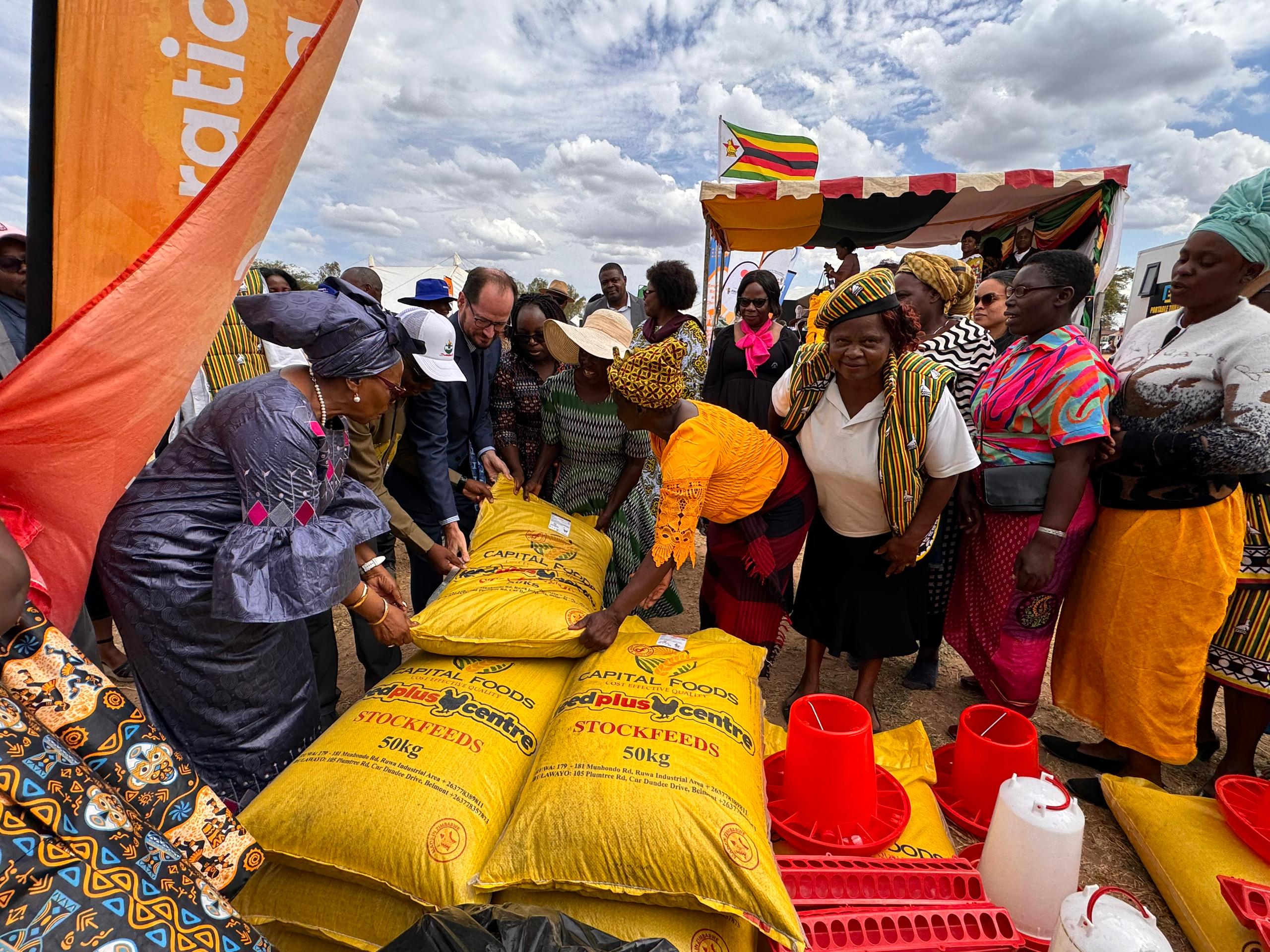Deputy Minister of Mines and Mining Development Dr Polite Kambamura (third from left) during the tour at Karo Mine
By Dickson Bandera
Zimbabwe Platinum Mines (Zimplats), might be the biggest platinum mine in Zimbabwe, but the works at Karo Platinum – a new mine just some few kilometres north of Zimplats – indicate that Zimbabwe will soon have another giant platinum mine sitting at the centre of the Great Dyke.
The Great Dyke is a rich source of Platinum Group Metals (PMGs), particularly platinum, palladium, and rhodium, as well as nickel and chrome. Unki, owned by Anglo American, and Mimosa are the other major platinum producers in the country.
Karo Mine sits right at the centre of the Great Dyke in an area of 23 903 hactres and at its full production capacity it is projected to produce 190,000 ounce per annum of platinum group metals.
Licenced by the government of Zimbabwe in 2018, Karo’s has an initial budget of US$416 million dollars and the mine is expected to start mining in 2024. Phase 2 looks to beneficiation, Phase three expanding the operation, and phase four will be going underground.
The Zimbabwe government has a free-carry 15% stake in the project, meaning that the government does not have to pay for the shares or contribute any equity capital but will be entitled to 15% of the dividends. Government also has an option to buy an additional 11% if it so wishes. Government is also given two slots in the Board of Directors, with vacancies yet to be filled.
When the Deputy Minister of Mines and Mining Development Dr Eng Kambamura visited the mine this Tuesday, the mine management was upbeat that they are assembling one of the biggest platinum mines, which will contribute significantly to the country’s Gross Domestic Product.
The Karo Resources country manager Dr Josphat Zimba briefed the deputy minister on the state of the project and led the Minister on a tour where different leaders presented on their line operations.
He said mine development work was moving with speed, with construction having started in December 2022. The engineering works have all been done and the mine is currently focussed on civil works. The construction includes mine concrete plants, water and sewer plants, electricity substation, control room, laboratory, accomodation, canteens, roads, among other facilities. Open-pit pilot mining has already started with the objective of optimizing the mining methods and producing ore to further test and refine metallurgical processing.
He further said the mine was assembling equipment for production which is currently being manufactured in countries like China, Germany and South Africa. Some of the manufactured equipment is now in warehouses in South Africa and Karo says about 900 trucks will be required to move it to Zimbabwe. The steel structures include bow mills, electricity transformers and accessories, bearings, gearboxes for agitators, feeders, lubrication, among others. According to Dr Zimba, the biggest mill, 7.25MW will soon be found at Karo. Currently in Zimbabwe the biggest mill is Zimplats 6MW.
Electricity supplies will be taken from Selous substation which is 38km away, and adjudication for a contractor to connect the mine with Selous will be done soon. Another contractor is already at the site building the substation while the other material to be used on the project is being manufactured in South Africa.
Karo Human Resources Manager said that as of December 12, 2023, the mine employed 1040 people, of which 134 are Karo employees drawn from the local community within 40km radius and the remainder are contractor employees.
But apart from employing the locals, Karo has also placed top priority on safety and health of all employees. To date, a total of 1.4 million hours have been expended without accidents.
A base metal refinery and precious metal refinery will also be constructed as part of the deal that will see 15 000 people being employed directly and a further 75 000 indirectly.
Dr Zimba dismissed the assertion that some platinum mines only declare platinum and not other PGM metals saying, all minerals are declared and valued right from the start. Platinum Group Metals (PGM) consist of 6 major metals which are platinum, ruthenium, rhodium, palladium, osmium, iridium, and platinum. The metals have similar physical and chemical properties.
With the coming of Karo, Zimbabwe is set to consolidate it’s position as one of the biggest platinum producers in the world.
Unki, the country’s second-largest producer, produced a record 232,000 ounces last year as it benefitted from a new US$62 million smelter.
Mimosa Platinum, which produces 124,000 ounces, is investing US$200 million to develop new mining areas at its operations near Zvishavane.


